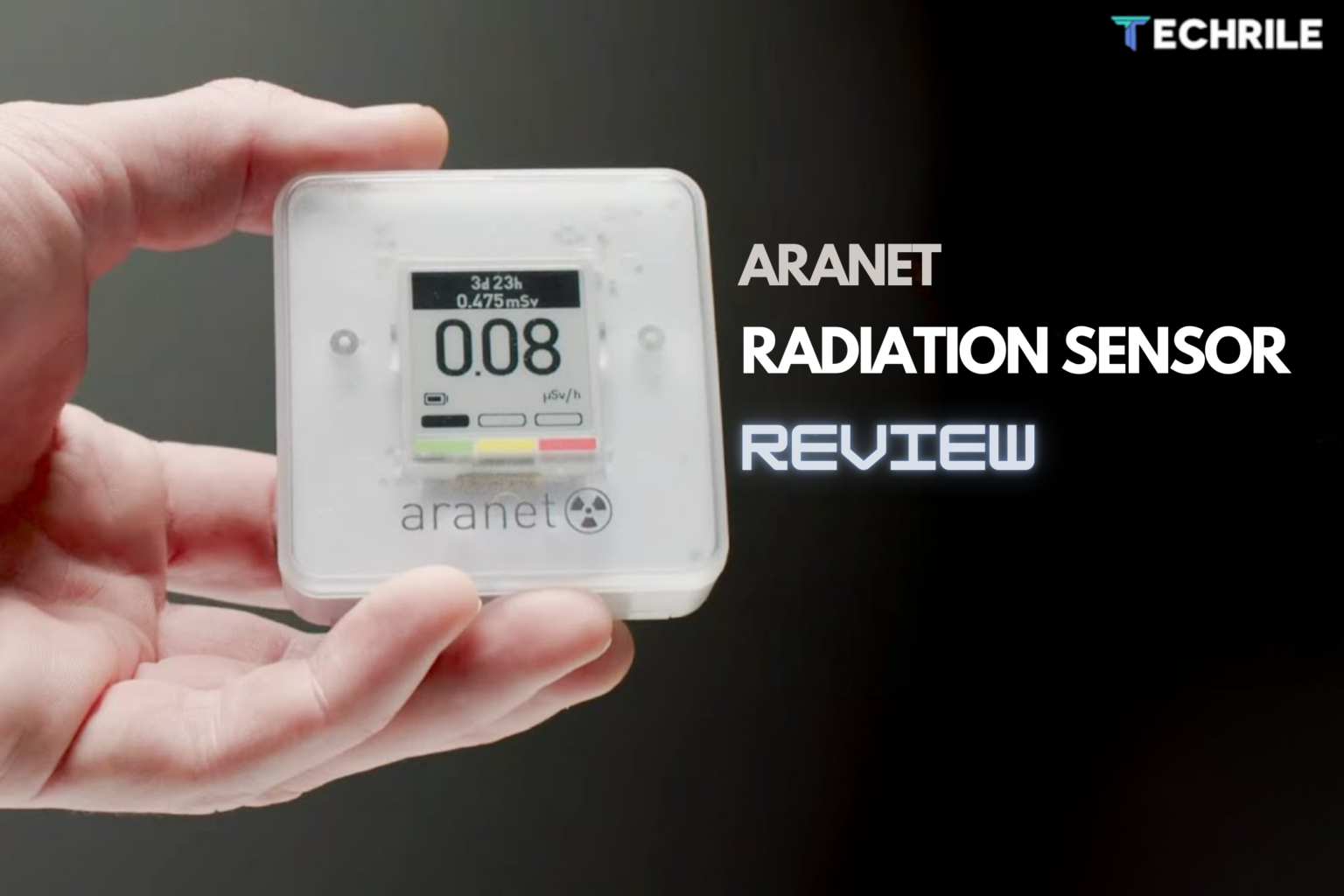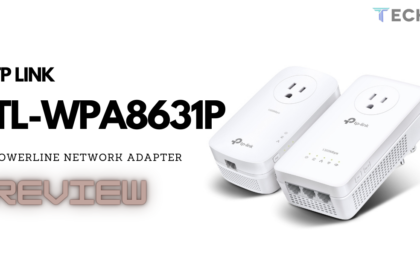The Aranet radiation sensor provides comprehensive monitoring of ionizing radiation by measuring both the total dose and the current reading. The sensor also has an additional feature for immediate detection of ionizing radiation, alerting users with a sound signal.
Ionizing radiation does not have to be sought far away; it can even be emitted by seemingly harmless household items, such as certain vintage clocks that contain radium to illuminate the dial in the dark.
Ionizing radiation, is a flow of particles or electromagnetic radiation that can ionize matter—creating ions and free electrons within it. Often, the term “radiation” specifically refers to ionizing radiation. Among the types of electromagnetic radiation, gamma rays and X-rays are considered ionizing radiation. While ultraviolet radiation (its high-frequency part) and even visible light can ionize in certain cases, they are generally not classified as ionizing radiation. Microwaves and radio waves are non-ionizing, regardless of their intensity (a shout-out to 5G tower haters and tin foil hat wearers).
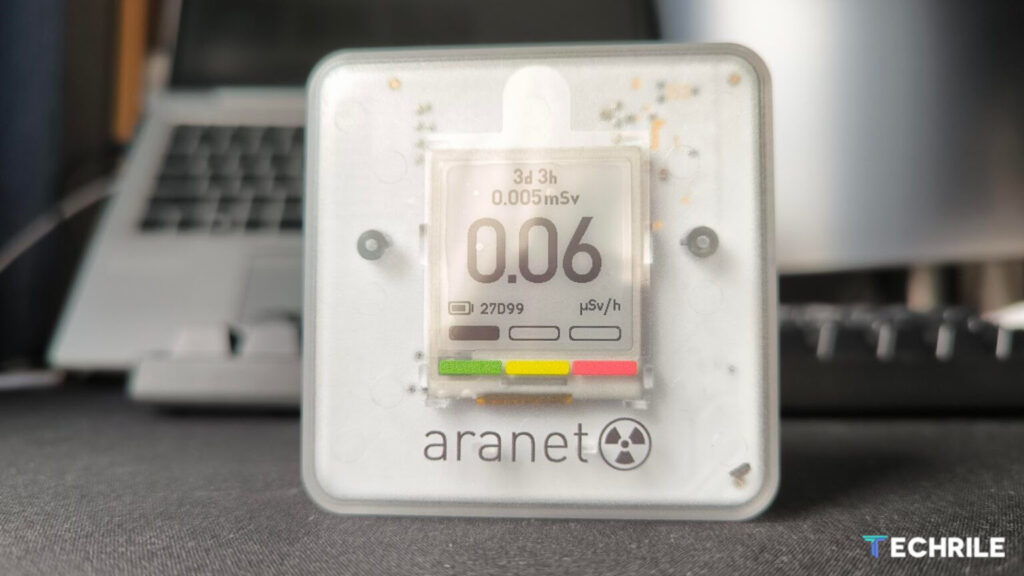
Detecting ionizing radiation is essential to ensure safety and health in environments where radiation levels may pose risks. Ionizing radiation can damage living tissues and increase the risk of cancer, especially with prolonged exposure. By monitoring ionizing radiation, potential threats at home or in the workplace can be identified and mitigated, helping to adhere to safety guidelines and maintain a healthy living environment.
The Aranet radiation sensor provides peace of mind through wireless environmental monitoring, and its high-quality components ensure measurement accuracy. The Aranet radiation sensor is calibrated for detecting gamma (γ) radiation in a certified laboratory. It is equipped with visual and audio alarm systems to alert users to unhealthy radiation levels based on scientific guidelines.
Gamma rays are electromagnetic waves with wavelengths shorter than X-rays. Gamma rays have greater penetrating ability and are stopped by lead shields and other thick barriers. They are produced during the radioactive decay of atoms. The wavelength of gamma rays is 0.01 nm or shorter, and their frequency exceeds 2.42 EHz. Gamma rays can be considered a flow of high-energy photons—gamma quanta. Gamma rays are a form of ionizing radiation. They are more penetrating than alpha (α) and beta (β) radiation but are less ionizing. Gamma rays are dangerous to life.
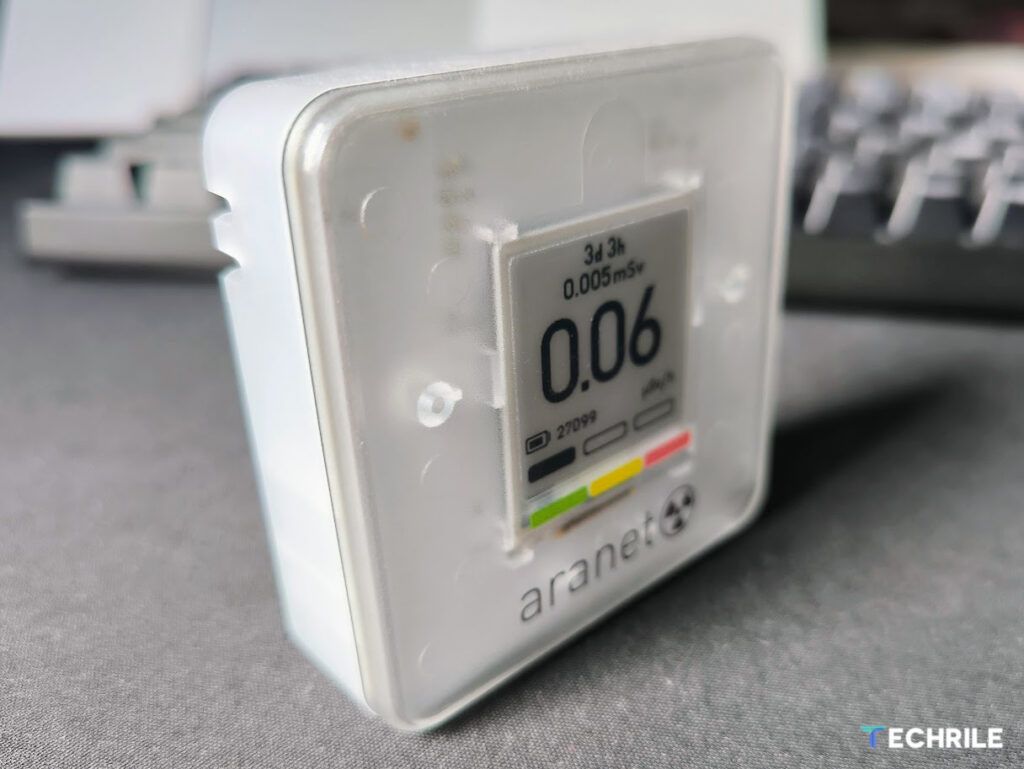
X-rays (similar to gamma rays) are high-energy photons that differ in origin; they are generated when the atomic electron structure changes or artificially, by bombarding a metal target with electrons in a vacuum (in an X-ray tube). These rays originate from processes outside the nucleus, while gamma rays originate from inside the nucleus. Therefore, X-rays have lower energy and lower penetrating ability.
The Aranet radiation sensor can detect gamma (γ), beta (β), and X-rays. However, it is designed to measure gamma (γ) radiation levels with high accuracy. Although it can detect beta (β) radiation and X-rays, it is not calibrated to provide accurate quantitative measurements for these types of radiation.
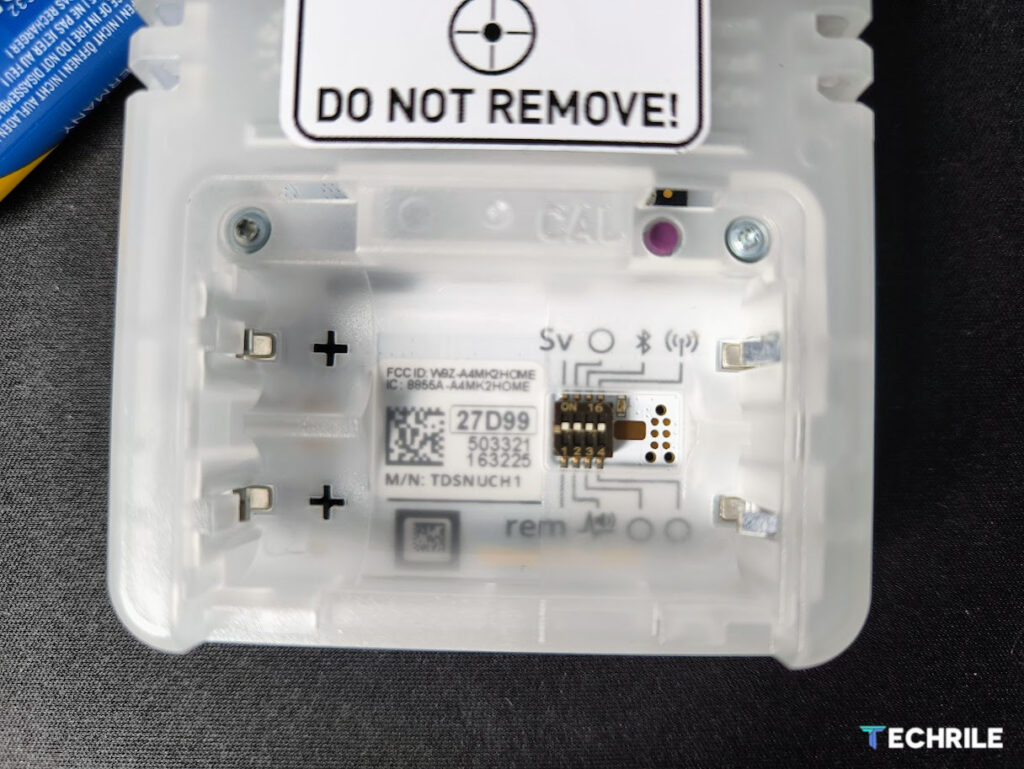
Appearance and Structure
The Aranet radiation sensor closely resembles other Aranet devices; its boxy size, design, and partial transparency are familiar, and it features an E-Ink screen that has also been used in previous Aranet devices.
The Aranet radiation sensor has a wireless connection, including Bluetooth connectivity with a smartphone application. It features an E-Ink screen and a particularly long battery life (up to 4 years), making it ideal for environmental dosimetry. The Aranet radiation sensor uses two AA batteries.
The sensor is equipped with visual and audible alarm systems that activate when radiation levels exceed scientifically determined safety limits. These alarms are designed to inform users promptly about any safety issues in the surrounding environment. The sound alert can be turned off at any time directly on the sensor (device) itself. To do this, simply open the back cover, remove the batteries, and switch the corresponding small switch. Unlike other Aranet sensors, this one cannot be mounted on a wall. Additionally, to ensure reliable measurements, the Aranet radiation sensor should not be placed too close to a wall or any other object, as indicated by a sticker on the back of the device.
Application
The Aranet Home app allows users to view historical data for the past 90 days, helping to notice and analyze changes in radiation levels. The Aranet Home app also lets users adjust device settings, including measurement intervals and alarm thresholds for personalized monitoring.
The Aranet Home app also enables data export. In the upper right corner, you can open the information panel, where there is a sharing icon that allows you to choose how you want to share or download the data (CSV).

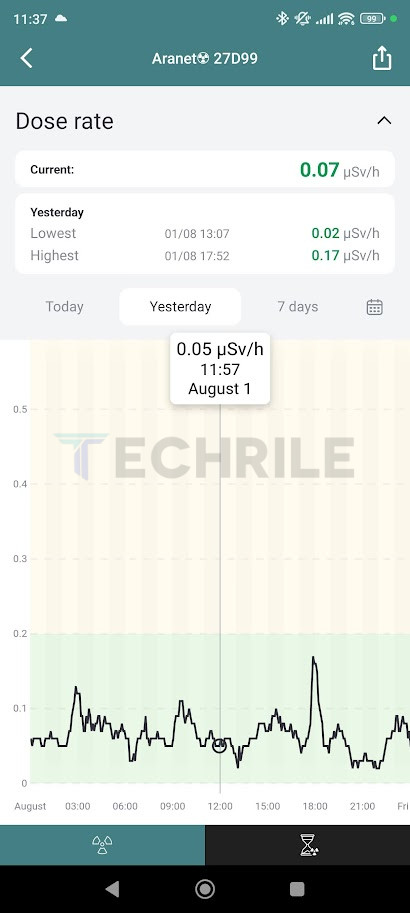
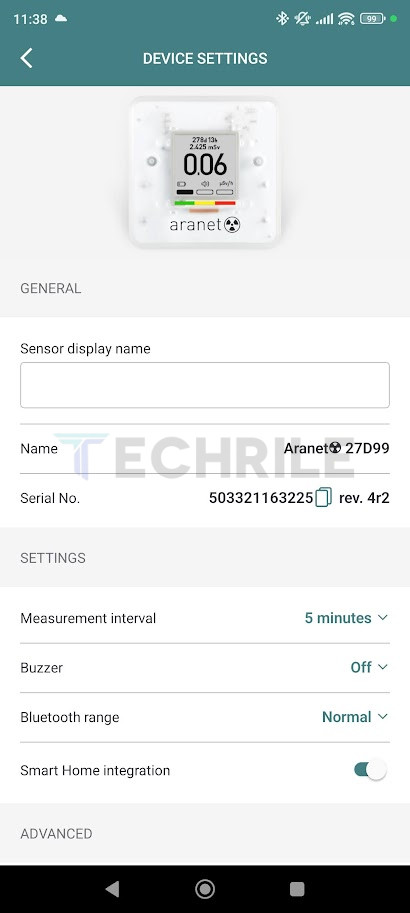
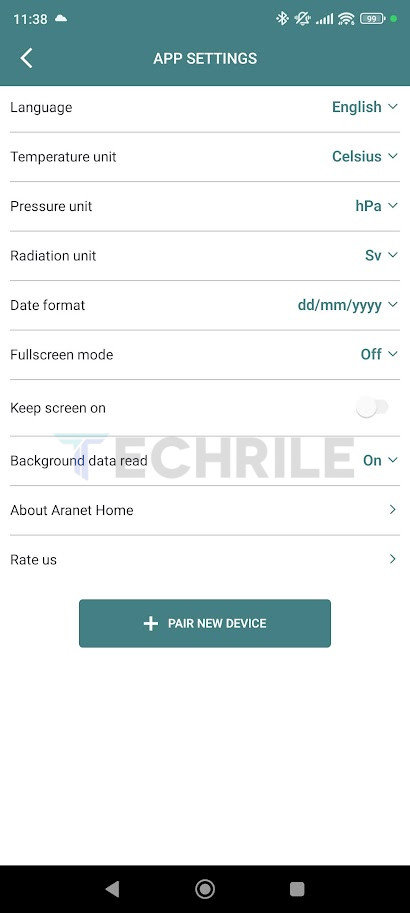
Does the Aranet Radiation Sensor Work?
I wasn’t able to catch any extreme radiation levels myself; on the contrary, they appeared quite stable in several areas of the house. However, David Harrison managed to use the Aranet radiation sensor while flying in an airplane. There, the Aranet radiation sensor did show elevated radiation levels, particularly noticeable when going through the airport security scanner, but there were also high readings inside the airplane.
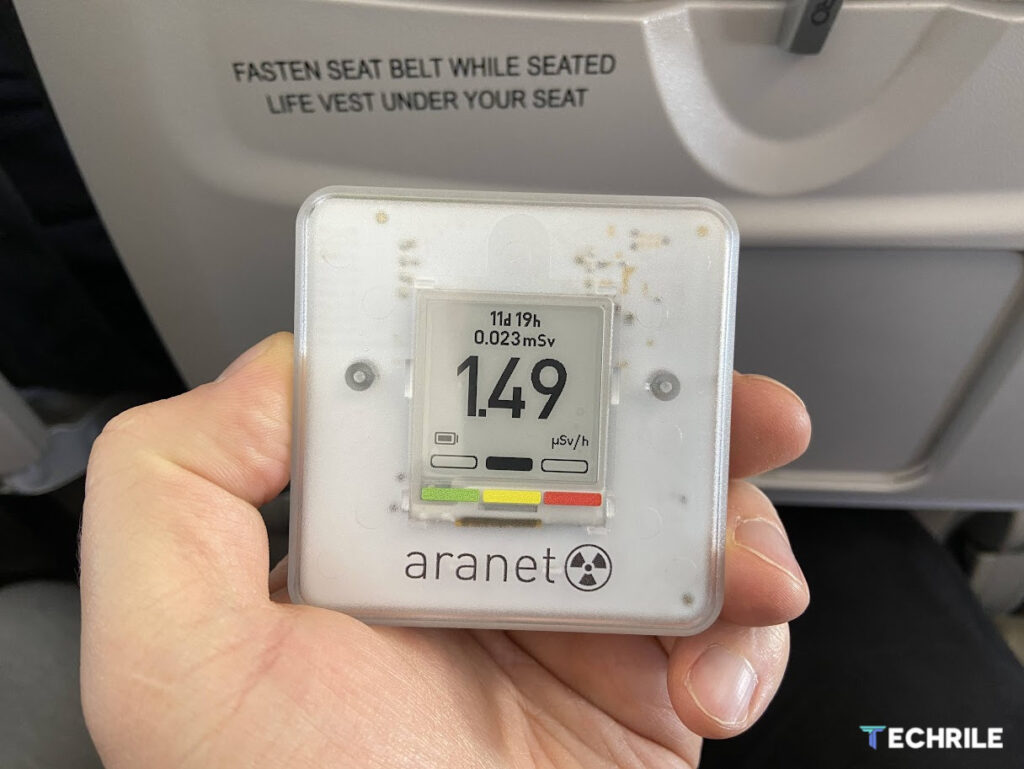
The data collected by the Aranet radiation sensor over the course of a year or two could definitely be beneficial for various workers, but that would require carrying the device around all the time, which isn’t its primary purpose.
In my view, the Aranet radiation sensor could be interesting for everyone, especially in the short term—to check for any radiation sources at home. You never know what might have been brought into the house over the years. And I’m not just talking about the Chernobyl disaster, but perhaps a wrongly dismantled X-ray machine whose parts were brought home by a grandfather or one of the children.
In Conclusion
At around $120, the Aranet radiation sensor is not a super cheap gadget, but it would be useful to have at least one for a larger family. It would also be a good idea to take such a device when traveling, not just to worry about airport security scanners but to check the safety of a hotel or other rented accommodation for your health.
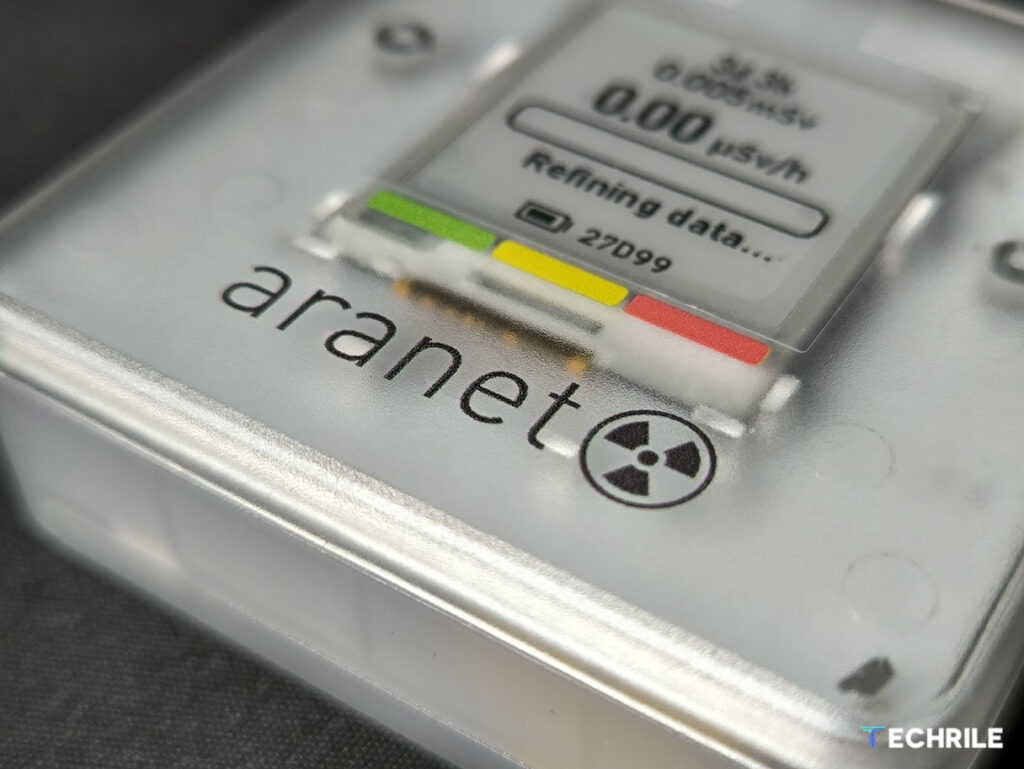
I looked online and saw that the prices of various radiation meters available in our area are rarely under 100 euros, which makes the Aranet radiation sensor fairly mid-range in price. The advantages of the Aranet radiation sensor definitely include its long battery life (other sensors with screens typically last about two weeks), as well as its screen and app for data collection. However, a potential drawback of the Aranet radiation sensor could be its relative immobility; while the device is not large, it is not protected against moisture and dust. This can be partially remedied with a few Aranet accessories available on the manufacturer’s website.

